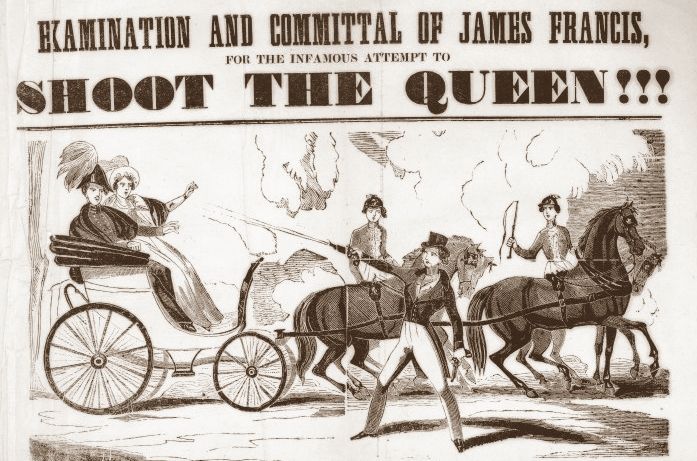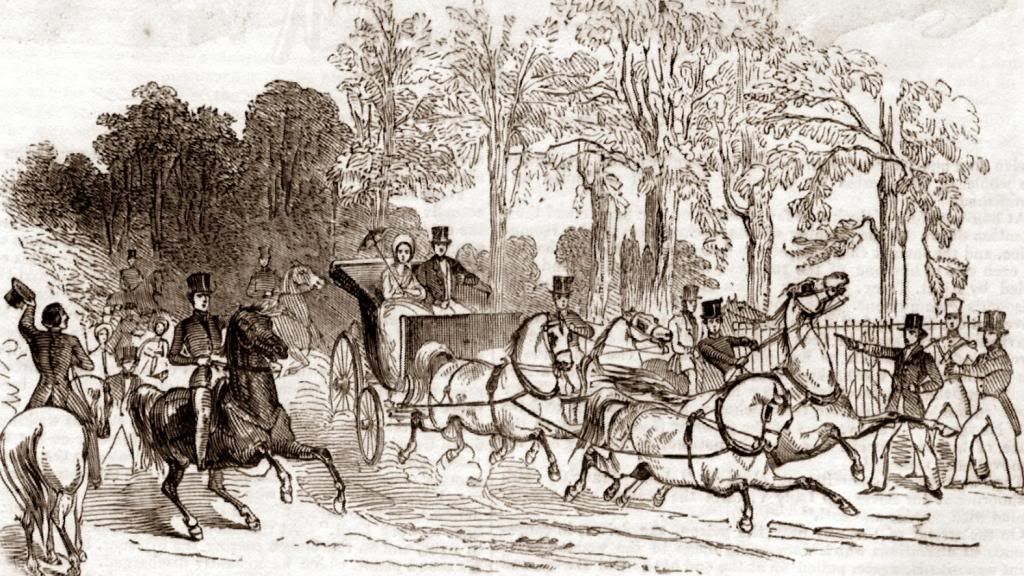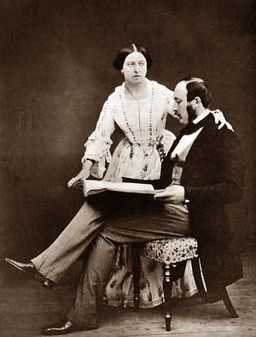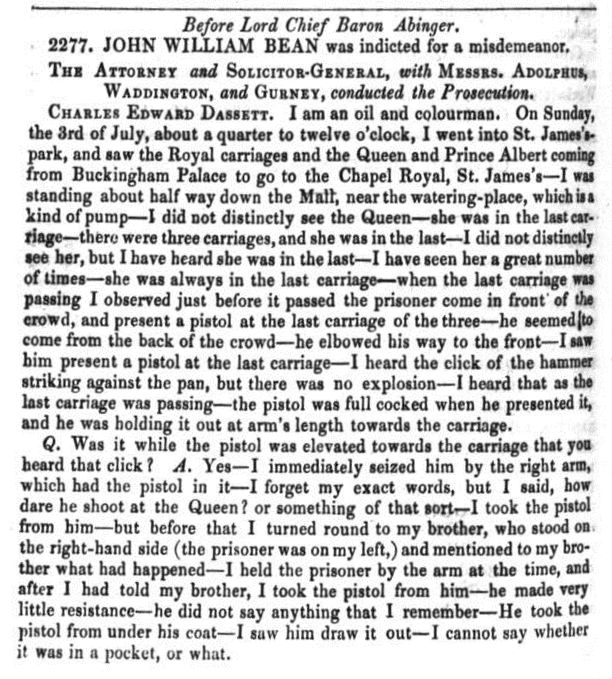They were all adolescent young fellows with pistols,
that’s the curious thing. That, and they all missed. Edward Oxford was the
first; he fired his pistols, missed and was certified insane. The next to try
was John Francis. He also tried and missed but his insanity plea fell on deaf
ears. Prince Albert was sure of that. “The wretched creature was not out of his
mind, but a thorough scamp,” Albert told his father. This particular 'thorough
scamp' had two bites at the cherry, which proved to be his undoing. Victoria and
Albert were riding back in their carriage from a service at the Chapel Royal,
St James’s, at two in the afternoon of Sunday May 29th 1842, and as they passed
along the Mall, returning home to Buckingham Palace, a man raised a pistol at
them and pulled the trigger. The gun misfired – a flash in the pan – but Albert
heard the click, like the shutting of a pocketknife, and saw the face of the
man.
 |
| SHOOT THE QUEEN !!! |
Back safely in the Palace, Albert spoke aside to Colonel Arbuthnot, an
equerry, and Sir Robert Peel and the Inspector of Police, amongst others, were
sent for. In an astonishing exhibition of either jaw-dropping bravery or
bamboozling foolhardiness, the Queen agreed to be bait by following the same
route, at the same time, on the following day with the express intent of
drawing the would-be assassin into a repeat attempt of his crime. The Queen
forbade her ladies-in-waiting to attend but the plan was kept secret and
plain-clothes policemen flooded the route. Sure enough, the lone gunman
returned and fired his gun at the carriage but the shot missed, passing beneath
the wheels. A plain-clothed policeman standing next to Francis seized him
immediately and he was taken him away. He was tried for and found guilty of
High Treason at the Old Bailey and sentenced to death but this sentence was
commuted to transportation for life when the Queen intervened and after lengthy
consideration by the Judges’ Bench and the Home Secretary, and John Francis was
packed off to the penal colony at Port Arthur in Van Diemen’s Land (now called
Tasmania).
 |
| Shoot the Queen |
Just two days after Francis’s reprieve, another young man, John
William Bean, fired a pistol at the Queen’s carriage. On Sunday July 3rd 1842,
she was again returning from a service at St James’s, this time accompanied by
her uncle Leopold, King of the Belgians, when Bean raised and fired his gun.
Bean was a disaffected, bookish young loner, aged only seventeen, who stood
just four feet tall, due to a spinal deformity that also left him with a
severely hunched back. He sold some of his battered old books and spent three
shillings on a ramshackle pistol from a Mr Bird, which he couldn’t get to work
properly and returned twice before paying an extra penny for a new flint, which
just managed to raise a spark. Nevertheless, on July 3rd 1842, Mr Bean stood on
The Mall and waited for the Queen. As her carriage passed by, he aimed the
defective pistol at it and pulled the trigger. There was a click and nothing
else.
 |
| Victoria and Albert |
Charles Dassett, an artists’ colourman, grabbed Bean’s arm, easily took
the flintlock away from him and with the help of his brother Fred and their
uncle, John James, dragged the unfortunate wretch to a policeman but Bean
wriggled free and escaped into the crowd. At first, everyone thought it was
just a hoax or boys play-acting but when the rusty, old gun was examined it was
found to be real enough, albeit broken and loosely loaded with an odd mixture
of black powder, gravel, paper, tobacco and broken clay-pipe stems. A police
search began for Bean and went on for a fortnight as every hunchback and dwarf
in London was pulled in for questioning. Bean was eventually arrested and sent
for trial; it appears that he had compared stories of Oxford and Francis’s life
in prison, with regular food, a roof and a bed, with his own miserable struggle
on the streets and decided that prison - or death - was the better option.
 |
| Trial of John William Bean - Old Bailey Proceedings |
He
was found guilty by a jury at the Old Bailey and sentenced to eighteen months
in gaol; after his release he stayed in London, married twice and had two
children but eventually committed suicide with a laudanum overdose in 1882. The
reason that Francis was sentenced to death and Bean was not is that in July
1842, the Treason Act was speedily pushed through Parliament, which created new
offences that carried more lenient sentences. An attempt to harm, injure or
alarm the Monarch, to be in possession of a firearm or offensive weapon in her
presence, and to cause a breach of the peace were punishable by not more than
seven years imprisonment and by flogging, although no one was ever flogged for
the offence - technically, Bean could have been flogged but Victoria intervened
and he was spared that part of his sentence.
 |
| Albert and Victoria |
You might be forgiven for thinking
that Constitution Hill and The Mall had been designated as official hunting
grounds for diminutive reigning monarchs as sure enough, just seven years
later, on May 19th 1849, a twenty-three-year-old unemployed Irishman called
William Hamilton drew a pistol as the Queen rode back through Green Park and
fired it at her. There was no ball in the gun, but Hamilton was charged under
the 1842 Act and transported to Van Diemen’s Land for seven years hard labour.
For a variation on what was by now a familiar theme,
see tomorrow.
No comments:
Post a Comment